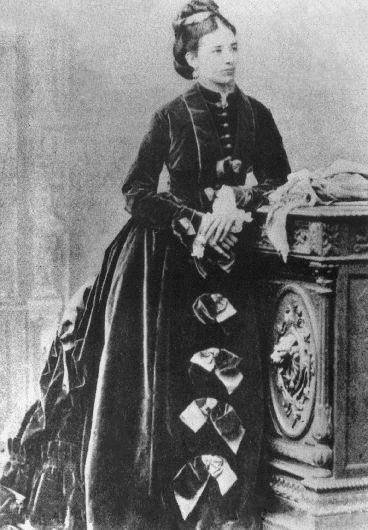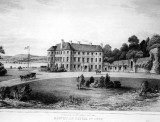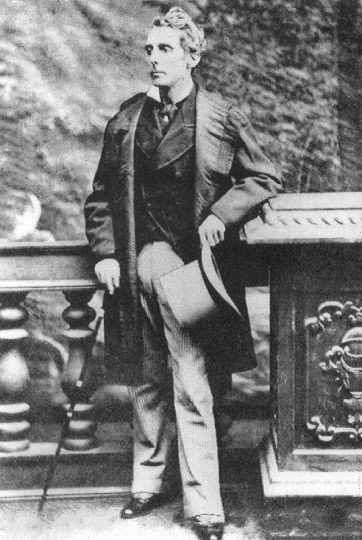James Joseph Roche, the Chairman of the magistrates in this case, is the nephew of John Roche, and in 1843 was living in Aghada Hall. He’s Ernest O’Bryen‘s first cousin twice removed.
(Cork Examiner 5/5/1843) –
CLOYNE PETTY SESSIONS – WEDNESDAY – CUTTING SEA-WEED – (FROM OUR REPORTER) – Presiding Magistrate-SAMUEL W. ADAMS, Chairman, JAS. J. ROCHE, R. G. ADAMS, THOMAS G. DURDIN, and JOSEPH HAYNES, Esqrs.
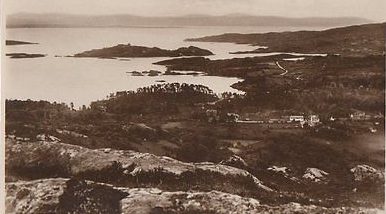 This being the day appointed by the Magistrates to investigate into the right of the public at large to cut sea-weed on Corkbeg and Trabolgan strands, great numbers of country-people assembled at the Court-house, and appeared most anxious to be present at and be informed as to the result of the trial. At an early hour the Court-house was thronged with listeners, and but for the judicious arrangements made by the magistrates, great inconvenience might have resulted from the vast number present on the occasion.
This being the day appointed by the Magistrates to investigate into the right of the public at large to cut sea-weed on Corkbeg and Trabolgan strands, great numbers of country-people assembled at the Court-house, and appeared most anxious to be present at and be informed as to the result of the trial. At an early hour the Court-house was thronged with listeners, and but for the judicious arrangements made by the magistrates, great inconvenience might have resulted from the vast number present on the occasion.
Besides the Magistrates on the bench several other respectable persons were in attendance, amongst whom were E. B. Roche, Esq., M. P., and Robert U. Penrose Fitzgerald, Esq.
Bartholomew Dennehy, John Hart, Michael Cotter, Patrick Kirby, Simon Kennedy, William Hart, J. Dennehy, William Cronin, and John Cronin, appeared on the summons of Michael Hallinan to show cause why a penalty not exceeding £5 should not be inflicted on them, under the provisions of the malicious trespass Act, 9 Geo. 4, cap 56, for having cut seaweed on the 13th of April at Corkbeg strand.
Mr. Scannell appeared as Counsel for the complainant, and Mr. Nagle as Agent, and Mr. Walsh appeared on behalf of the defendants. – Mr. Scannell said that this was a prosecution instituted under the , 9 Geo. 4, cap 56, sec. 30, which was framed for the purpose of enabling parties to punish persons for committing a malicious injury who would not be solvent marks for an action in the higher Courts. That section enabled the Magistrates to award a reasonable compensation for the injury sustained, but it should not exceed £5. That Act however, contained a proviso, that the party complained of should not be fined or punished, if he did the act under a reasonable supposition that he was authorised in doing it. Sea Weed was becoming a most valuable property and he was ready to prove Mr. Fitzgerald’s title to the weed growing on the Corkbeg strand, by a patent granted by Charles the II. Mr. Scannell then cited several cases from the 5th Term Reports, Nunn and Walsh and several other law authorities, to prove that the case came within the malicious trespass act.
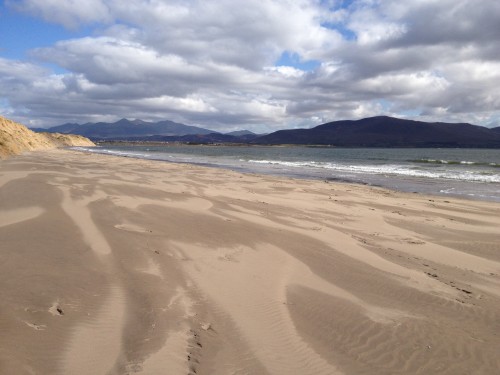 Michael Hallinan was called and examined at some length by Mr. Scannell. He proved that the defendant had cut seaweed above low-water mark; he saw them go to the place in boats. Cross-examined by Mr. Walsh – I often saw men cutting weed there for the last 30 years; will not swear that other boats were on the same spot and cut weed, but as long as I remember, I have seen boats coming from Seamount cutting weed below low-water mark; the description of weed they cut was lawn clout; each of those men were cutting lawn clouts on that day; they grow high and dry on the rock when the tide is out and some of them are a foot and some two feet long, the same as ourselves grow (laughter); I did not see slings there on that day, but boys had them the day after. To Mr. Scannell – Power was not looking at the persons cutting the weed within low-water mark nor did he know they were cutting it. To Mr. Walsh – I would not swear that within 30 years Power or his people did not see them cutting the weed.
Michael Hallinan was called and examined at some length by Mr. Scannell. He proved that the defendant had cut seaweed above low-water mark; he saw them go to the place in boats. Cross-examined by Mr. Walsh – I often saw men cutting weed there for the last 30 years; will not swear that other boats were on the same spot and cut weed, but as long as I remember, I have seen boats coming from Seamount cutting weed below low-water mark; the description of weed they cut was lawn clout; each of those men were cutting lawn clouts on that day; they grow high and dry on the rock when the tide is out and some of them are a foot and some two feet long, the same as ourselves grow (laughter); I did not see slings there on that day, but boys had them the day after. To Mr. Scannell – Power was not looking at the persons cutting the weed within low-water mark nor did he know they were cutting it. To Mr. Walsh – I would not swear that within 30 years Power or his people did not see them cutting the weed.
Maurice Uniack examined by Mr. Scannell – I know the strand under Carlisle over 20 years and the line of rocks lying above low water mark; was taking care of the weed for the late Col. Fitzgerald and when any boats took it, it was against my consent. Cross-examined by Mr. Walsh – I don’t know the spot where those boats were cutting the weed; the people were prevented for the last 20 years from cutting weed there by Colonel Fitzgerald; as I never saw any person cutting weed there who did not pay for it; Mr. Fitzgerald lets the strand early in the season, and any person that cut it, took it from the tenant. To Mr. Scannell – The strand has been let for the last 20 years.
The case for the prosecution having closed, Mr. Walsh put it to the Bench whether they had evidence of Power having the strand from any person or that he let it to Hallinan. The Chairman thought there was not sufficient evidence of it.
John Power proved that he took part of the strand from Mr. Cox for £7 a year, who got it from Mr. Fitzgerald. Cross-examined by Mr. Walsh – I kept part of the strand and let the remainder to Hallinan; they were cutting the weed against my will, but as the boat was not marked, I could not tell the names of the owners. Mr. Cox examined by Mr. Scannell – I know this strand which I took from Mr. Fitzgerald, and let part of it to Power. Cross-examined by Mr. Walsh – There was writing between me and Mr. Fitzgerald, on taking it.
Mr. Scannell then produced a lease which Mr. Walsh contended was but an agreement for a lease and that as the rent was £100, there should be £1 15s. stamp to it. Mr. Scannell stated that it was stamped within the last six days in Dublin. The validity of the lease was allowed after a long argument. Mr. Cox, cross-examined by Mr. Walsh – It was for the purpose of establishing the right I took the strand; I had the strand three years before this prosecution.
Mr. Walsh said that his clients were only summoned last night, and he had not time to look at his papers or prepare for the defence. Mr. Adams – Do you claim an adjournment? Mr. Walsh – Yes, until next court day, that I may consult with the law officers of the Crown. Mr. Fitzgerald – But the weed will be cut in the interim. Mr. Walsh – But the poor people must have fair play. Mr. Fitzgerald – I will give them no fair play when they have no title to it.
Mr. Walsh wished to have time to frame their defence, and he would undertake that the persons from that district would not cut the weed until this day week. His object was to get the advice of the law officers of the crown on the matter. Mr. Fitzgerald – Here is the opinion of the law officer of the crown (handing a paper). Mr. Walsh – But you should remember that the opinion of Mr. Green is at variance with Mr. Monaghan who gave an opinion on a case similar to this which Mr. Jagoe admitted was a failure. Mr. Nagle – Mr. O’Connell’s opinion is that the weed growing between high and low water mark is private property. Mr. Jagoe said that in cases of this description, where a patent was produced or a judgement against the parties, the Magistrates were bound to receive it. Mr. Scannell – And that is just what I am going to do. Mr. Scannell then produced a grant of Charles the 2nd to Garrett Fitzgerald of the lands of Corkbeg.
Mr. Nagle produced a conviction granted at the suit of Patrick Geary against James Corkeran for a trespass on that strand, for which he was fined 7s. 6d. Mr. Walsh contended that the patent did not grant the sea shore, but 600 acres profitable land. Mr. Adams did not see what land could be more profitable than the strand. Mr. Walsh objected to their reading the sea shore as profitable land, but land which is cultivated.
Mr. Fitzgerald – What do you say to the right of fishing? Mr. Walsh – That is an appurtenance to the land because it is on the sea. Mr. Nagle – There are 971 acres mentioned in another part of the patent.
Mr. Walsh said there were three kinds of land, terra firma, sea-shore and bottom; the subject can exercise a right over the sea shore between high and low water mark. Mr. Adams stated that Mr. Green’s opinion said that the shore was the property of the Crown between high and low water mark, but it was sometimes vested in the subject. Mr. Walsh agreed with him, but a grant had been produced in this case. If no grant had been produced they might assume that it was his property by exercising an ownership over it. That patent being produced, the Crown granted only 600 acres of profitable land by it. They were well aware that in old grants, the sea shore was not denominated profitable land, and the sea shore being land it could not be held as an appurtenance to land. Mr. Walsh then cited several cases from Barnwall and Creswell, Hall and Butler’s Reports, to prove that land could not be held as an appurtenance to land. He then contended that they could not assume, from his exercising acts of ownership, that the patent granted more than it was found to grant on its production. He submitted that as the sea shore was not granted by the patent, it raised the magistrates right of jurisdiction. Mr. Adams – You will not say that your client could go there against the prescriptive right in the Corkbeg family.
After some further arrangement, Mr. Walsh then contended that they should dismiss the case without entering into the claim of right at all. Were they to assume that those parties who cut the weed for thirty years would now ipso facto set up a fictitious supposition to having a right. He called on them to let the party try their civil right in another Court. Notwithstanding what has been said in the law books respecting their jurisdiction, they sat there like so many chief justices and tried the prescriptive right and a patent; and he called on them to adjudicate on the matter without legal assistance. It was better for them either to let the party try his civil right or else take informations and return them over to the Assistant Barrister’s Court.Mr. Adams suggested that the men should go and cut the weed tomorrow and let them be tried at the Sessions. Mr. Walsh was satisfied. Mr. Scannell – But no indictment could be framed unless there was a charge of violence.
Mr. Walsh was satisfied to allow information to be taken for using violence, and let the right be tried by the Assistant Barrister. The Court would not allow this and, Mr. Walsh said, he would now call on John Harty to give evidence. Mr. Scannell objected to his being examined as he was one of those summoned. The Court after a long argument would not permit the examination of the witness. The Chairman at length announced the decision of the Bench to be that they should be fined 10s. each or in case of non-payment to 1 month’s imprisonment in the House of Correction. Mr. Walsh requested them to impose a lighter fine. The Chairman declined doing so, as they would fine them much more heavily but for something that appeared on the trial.
Timothy Kiely, John Scannell, John Flynn Jun., John Enright, J. Flynn Sen., Thomas Barry and James Sliny, appeared on the summons of Richard Collins, to shew cause why they should not be convicted in a penalty of £5 under the malicious trespass act, for having cut a weed at Trabolgan on the 15th of April. Mr. Jagoe said that in this case he would proceed to prove his prescriptive right.
Michael Fitzgerald examined by Mr. Jagoe – Swore that he was at the strand of Trabolgan on the 15th of April and saw Enright pulling the weeds of the rock at half ebb tide; I desired him to go away but he desired me to mind my own business. Cross-examined by Mr. Walsh – He was standing on the dry rock pulling the weed and throwing it into the boat; John Scannell, Timothy Kiely and Thomas Barry were in the boat; when the tide would be out the place the boat was would be dry; I saw him push away the boat which was in, raised there by the water; he pushed her away with an oar; there were other boats there but they were further out to sea; Paddy Cashman and I went out to see if the strand under the rock would be dry at low water; he went off the rock almost immediately after being desired; would not swear that the weed he took was worth a halfpenny.
James Collins proved having seen Enright cutting the weed on the 15th of April, but did not think he cut 6d worth; he was cutting it on the strand about half way between high and low water mark.
Edward Sisk stated that he was never six months out of Trabolgan since he was born, and remembered Col. Roche setting the strand to Ahern in 1777, and no person ever attempted to trespass on it; it was held since by several persons and then the Ahern’s got it again; since 1837, when it was given up by Russell it was set in lots. To Mr. Walsh – Does not know on what part of the strand those men were cutting the weed.
The case for the prosecution having closed, Mr. Walsh considered that the evidence was clear that what the defendant cut was above low water mark, and he had no case on which he could raise an objection as to Mr. Roche’s right to the strand. However there was no evidence as to the value of the weed cut. The Chairman said that he conjectured that it was worth 2d. Mr. Walsh contended that in a criminal case they could not convict on a conjecture. Mr. Scannell believed the witness swore it was worth 2d at least.
Mr. Roche confessed he was anxious to convict Enright because he was one of a body he convicted before, and let off on a promise of not coming again. He was ready to let off the others on the conviction of one, as they were instigated to do the act in consequence of the feeling being abroad that it was not firm property. If they would plead guilty, he would let them off on a nominal penalty, as he had proved his property, and was not anxious to punish them. Mr. Scannell wished to have them plead guilty and not be called in for judgement unless they trespassed again. Mr. Walsh would have no objection to that course, if Mr. Roche’s own eyes were on them, and could decide whether they were above or below low water mark. He would consent to Mr. Roche’s proposition to have them fined a penny each on a promise they would not go there again. Mr. Roche – That is what I have done.
The Court then fined the parties one penny each, and then being informed that six of those who were fined 10s. each had declined paying the penalty, warrants were made out, and they were transmitted to the County gaol to be imprisoned for one month.
